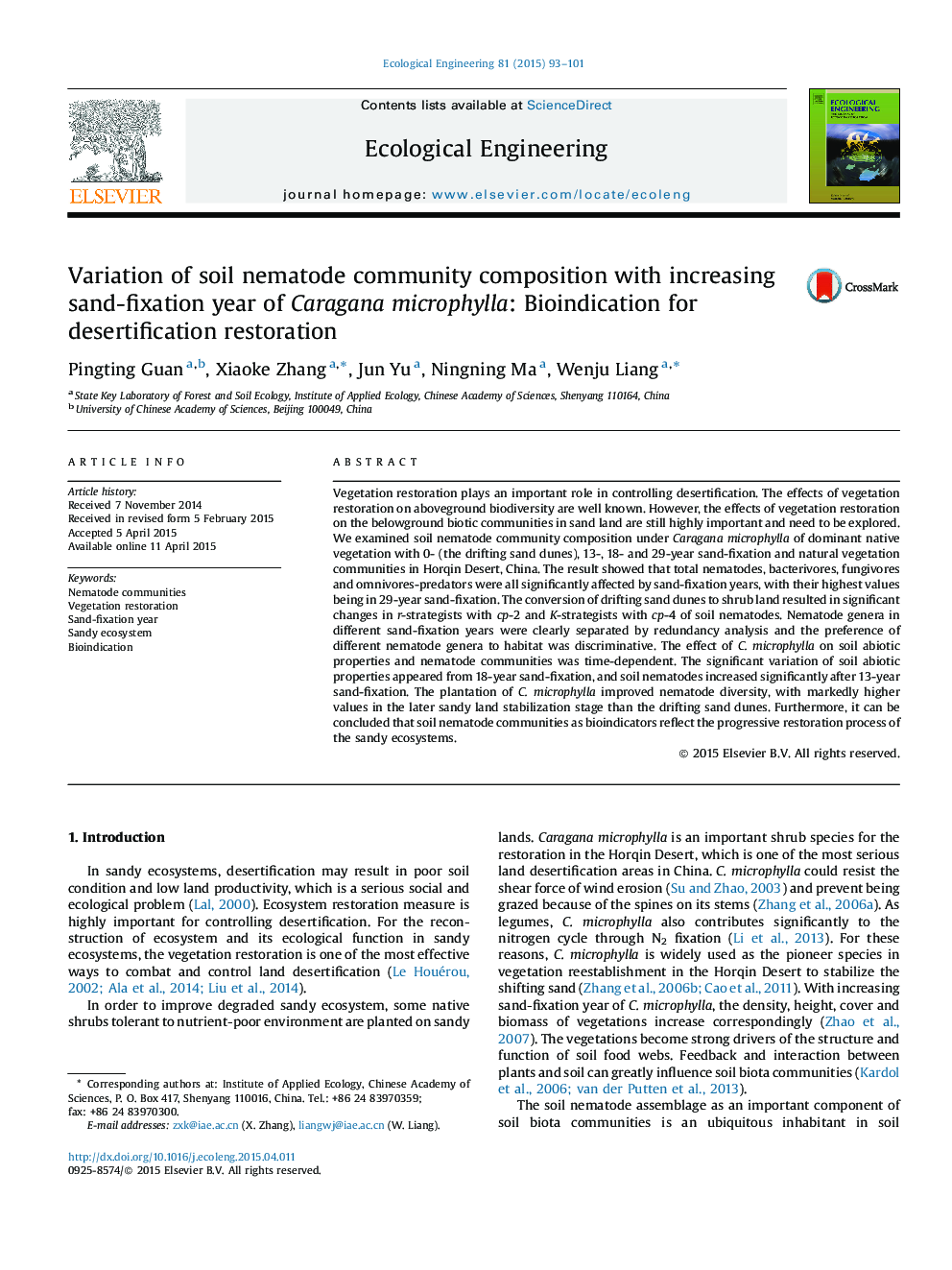| کد مقاله | کد نشریه | سال انتشار | مقاله انگلیسی | نسخه تمام متن |
|---|---|---|---|---|
| 4389061 | 1618018 | 2015 | 9 صفحه PDF | دانلود رایگان |

• The effect of Caragana microphylla on soil abiotic properties and nematode communities was time-dependent.
• The responses of different nematode genera to sand-fixation years were discriminative.
• Soil nematode communities reflect the progressive reversion process of desertification.
Vegetation restoration plays an important role in controlling desertification. The effects of vegetation restoration on aboveground biodiversity are well known. However, the effects of vegetation restoration on the belowground biotic communities in sand land are still highly important and need to be explored. We examined soil nematode community composition under Caragana microphylla of dominant native vegetation with 0- (the drifting sand dunes), 13-, 18- and 29-year sand-fixation and natural vegetation communities in Horqin Desert, China. The result showed that total nematodes, bacterivores, fungivores and omnivores-predators were all significantly affected by sand-fixation years, with their highest values being in 29-year sand-fixation. The conversion of drifting sand dunes to shrub land resulted in significant changes in r-strategists with cp-2 and K-strategists with cp-4 of soil nematodes. Nematode genera in different sand-fixation years were clearly separated by redundancy analysis and the preference of different nematode genera to habitat was discriminative. The effect of C. microphylla on soil abiotic properties and nematode communities was time-dependent. The significant variation of soil abiotic properties appeared from 18-year sand-fixation, and soil nematodes increased significantly after 13-year sand-fixation. The plantation of C. microphylla improved nematode diversity, with markedly higher values in the later sandy land stabilization stage than the drifting sand dunes. Furthermore, it can be concluded that soil nematode communities as bioindicators reflect the progressive restoration process of the sandy ecosystems.
Journal: Ecological Engineering - Volume 81, August 2015, Pages 93–101